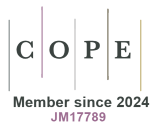Preparation of intravenous chemotherapy bags: evaluation of a dose banding approach in an Italian oncology hospital
DOI:
https://doi.org/10.33393/grhta.2021.2202Keywords:
Antineoplastic agent, Costs analysis, Dose banding, Drug compounding, Economic gain, Time managementAbstract
Introduction: Dose banding is an original approach that manages intravenous (IV) chemotherapy preparation by generating on a weekly basis a series of bags containing scaled dosages of the active agent. These predetermined, fixed dosage bags are intended to replace the traditional bags prepared daily that contain fully individualized dosages.
Methods: Three different scenarios were examined: (1) the current method of daily preparation of individualized bags at the hospital pharmacy; (2) the weekly preparation at the hospital pharmacy of non-individualized bags containing discrete, predefined doses covering an adequate range of doses (dose banding); (3) the use of commercial ready-to-use bags based on the same approach of dose banding. The objective of this study was to compare these three different approaches in terms of cost per patient. We considered five cancer drugs (gemcitabine, oxaliplatin, paclitaxel, trastuzumab and 5-fluorouracil) that were suitable for the dose ranging approach. Appropriate dose bands for these five agents were identified. Costs were estimated for each of the three approaches.
Results: A total of 13,490 fully individualized bags were studied, which corresponded to the real bags prepared at our institution for these five agents in 2018. Dose banding was predicted to determine savings ranging from €10,998 (−0.84%) for trastuzumab to €169,429.60 (−8.39%) for paclitaxel.
Conclusion: The introduction of dose banding can determine economic savings along with other advantages, such as improved work conditions, management reorganization and containment of waste. The pharmaceutical industry can hopefully support these experiences by producing ready-to-use bags in predetermined dosages.
References
- Finch M, Masters N. Implications of parenteral chemotherapy dose standardisation in a tertiary oncology centre. J Oncol Pharm Pract. 2019;25(7):1687-1691. https://doi.org/10.1177/1078155218812943 PMID:30400751
- Gurney H. Dose calculation of anticancer drugs: a review of the current practice and introduction of an alternative. J Clin Oncol. 1996;14(9):2590-2611. https://doi.org/10.1200/JCO.1996.14.9.2590 PMID:8823340
- Fan J, de Lannoy IA. Pharmacokinetics. Biochem Pharmacol. 2014;87(1):93-120. https://doi.org/10.1016/j.bcp.2013.09.007 PMID:24055064
- Felici A, Verweij J, Sparreboom A. Dosing strategies for anticancer drugs: the good, the bad and body-surface area. Eur J Cancer. 2002;38(13):1677-1684. https://doi.org/10.1016/S0959-8049(02)00151-X PMID:12175683
- Damuzzo V, Russi A, Chiumente M, et al. Optimization of resources by drug management: a multicentred web-administered study on the use of ipilimumab in Italy. J Oncol Pharm Pract. 2019;25(4):787-792. https://doi.org/10.1177/1078155218755867 PMID:29444609
- [Raccomandazione 14] Italian Ministry of health. Raccomandazione per la prevenzione degli errori in terapia con farmaci antineoplastici. http://www.salute.gov.it/imgs/C_17_pubblicazioni_1861_allegato.pdf. Accessed October 18, 2020.
- Chatelut E, White-Koning ML, Mathijssen RH, Puisset F, Baker SD, Sparreboom A. Dose banding as an alternative to body surface area-based dosing of chemotherapeutic agents. Br J Cancer. 2012;107(7):1100-1106. https://doi.org/10.1038/bjc.2012.357 PMID:22929884
- National Institute for Health and Care Excellence. Chemotherapy dose standardization. February 2018. www.nice.org.uk/advice/ktt22. Accessed May 21, 2019.
- Pouliquen AL, Escalup L, Jourdan N, Cottu P, Faure P, Madelaine-Chambrin I. Dose standardisation of anticancer drugs. Int J Clin Pharm. 2011;33(2):221-228. https://doi.org/10.1007/s11096-010-9478-6 PMID:21369959
- Ogungbenro K, Patel A, Duncombe R, Nuttall R, Clark J, Lorigan P. Dose rationalization of pembrolizumab and nivolumab using pharmacokinetic modeling and simulation and cost analysis. Clin Pharmacol Ther. 2018;103(4):582-590. https://doi.org/10.1002/cpt.875 PMID:28913853
- Fahey OG, Koth SM, Bergsbaken JJ, Jones HA, Trapskin PJ. Automated parenteral chemotherapy dose-banding to improve patient safety and decrease drug costs. J Oncol Pharm Pract. 2020;26(2):345-350. https://doi.org/10.1177/1078155219846958 PMID:31046608
- Mayor S. National Health Service England introduces dose banding. Lancet Oncol. 2016;17(7):e271. https://doi.org/10.1016/S1470-2045(16)30199-1 PMID:27237612
- Micromedex. www.micromedexsolutions.com. Accessed June 3, 2020.
- Stabilis. https://www.stabilis.org/. Accessed June 6, 2020.
- Pabari RM, Ryan B, Ahmad W, Ramtoola Z. Physical and structural stability of the monoclonal antibody, trastuzumab (Herceptin®), intravenous solutions. Curr Pharm Biotechnol. 2013;14(2):220-225. PMID:23360264
- Martel P, Petit I, Pinguet F, Poujol S, Astre C, Fabbro M. Long-term stability of 5-fluorouracil stored in PVC bags and in ambulatory pump reservoirs. J Pharm Biomed Anal. 1996;14(4):395-399. https://doi.org/10.1016/0731-7085(95)01635-X PMID:8729637
- Baker JJ. Activity-based costing and activity-based management for health care. Gaithersburg, MD: Aspen 1998.










